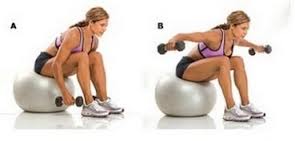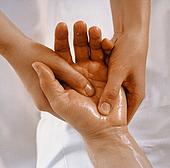There is no doubt some of our readers who have activities in the form of classes and group exercise sufficient for a good weekly workout. Then there we have a majority out there who are gym members with set routines and whilst such members tend to observe a 5 day fitness regime however there are those who commute and have lifestyles which may find it more convenient to visit the gym 3 days per week – and over the weekend round it off with a healthy walk, cycling session or something fun outdoors. For the following advise to be useful it is presumed that our readers are already familiar with their local gym and the equipment with full medical clearance. This is a definitive guide to refine techniques for the busy professional. To create a perfect, balanced physique, one would abide by these following principals:
Divide your work out days into three separate days, with each training cycle lasting a period of seven (7) days.
Day 1 is the chest, triceps and calves (pushing exercises).
Day 2 is the back, traps and biceps (pulling exercises).
Day 3 is the legs, calves and shoulders (pushing exercises)
Execute no more than 10 sets for a large body part, such as the chest, back, and legs.
Execute no more than 6 sets for a small body part, such as the triceps, biceps and shoulders.
Our readers should note that it is far more efficient and safe to carry out more sets of exercises at a lighter weight which are precisely executed compared to fewer heavier sets which are not properly executed. This will also save the back from unnecessary strain.
Also do no more than 3 sets for the calves and traps.
Then do 3 varieties of exercises for large body parts and 2 varieties of exercises for the smaller body parts.
Perform exercises on the large body parts first and the smaller body parts last.
I would advocate the use of the pyramid and reverse pyramid training techniques, with regards to the repetition range used. (commonly 6 to 12 reps are used)
Use progressive overload training, as this will stimulate and challenge both the fast twitch and the slow twitch muscle fibres equally.
Learn the correct form for each exercise and concentrate on getting the “right feel” for each and every rep of every set, so as to create the maximum “muscle pump” possible and to develop the “mind- muscle” neurological link.
Use the “instinctive training principle” to vary the training load on a particular day, depending on how strong you feel on that particular day.
Day 1. begin every work out with at least a minimum of one light set to practice the form of the exercise involved.
So as to stretch and warm up the muscle group to be trained.
In cold climates it is advisable to do at least five to ten minutes of cardiovascular warm up such as cycling, rowing or fast walking as well as the practice warm up set.
Each individual work out, should last no longer than one hours duration.
Chest
– incline bench press (4 sets) (barbell or dumbell)
– bench press (4 sets) (barbell or dumbell)

– fly’s, incline fly’s, pec decs or cable cross overs (2 sets)
Triceps
– french press (3 sets) (on the ez bar)
– standing triceps extensions (3 sets)
Calves
– donkey or standing calf raises (3 sets)
Day2.
Back
– lat pulldown to front (4 sets)
– lat pulldown to rear (4 sets)
– spider rows (2 sets) (on the back supported machine)
Traps

– dumbell trap raises (3 sets)
Biceps
– dumbell incline curls (3 sets)
– preacher curl machine (3 sets)
Day3.
Legs
– leg press (4 sets)
– leg extensions (3sets)
– leg curls (3 sets)
Calves
– donkey or standing calf raises (3 sets)
Shoulders
– smith machine barbell press behind the neck (4 sets) (or use dumbells)
– standing dumbell side lateral raise (1 set)
– bent over dumbell side lateral raise (1 set) (or use the cable machine)
Use partial reps, forced reps, or descending sets, on the last set for each body part, to get the maximum intensity for each work out.
Get adequate rest, sleep, food and be sensible by taking safe and approved anabolic supplements for recuperation between the work outs.
If injured, seek medical attention and allow at least 7 days rest, if your physician approve:
This is followed by 1 to 2 weeks on light training (high reps of 15 to 20 reps).
Then this is followed by1 to 2 weeks on moderate training (medium reps of 12 to 15 reps).
Then you may return, to the normal workout.
Use the eclectic work out principle, to change the work out modalities periodically, to break through training plateaus.
Change the repetition range and exercise type used periodically to break through training plateaus.
For example, use dumbells versus barbells for a change from time to time.
A three phase rotation of work out types, with each phase lasting 4 weeks, works quite effectively.
Now many of us would regard at least our week’s gym and fitness regime as being incomplete without experiencing the benefits of stretching.
Stretching exercises
Hyperextensions should be performed lying on your abdomen arching your whole spine, with a moderate arch and contraction held for approximately seven seconds.
Do not arch too hard, as this can strain the ligament attachments of the longissimus muscles that run on either side of the spine and cause muscle pain.
The hamsting stretch is performed lying on your back with the aim of flexing your leg to at least a ninety degree angle to your body at the hip, by pulling one leg at a time with both hands behind the knee and holding the stretch for at least thirty seconds.
The hamstring stretch elongates with practise the hamstrings or extensor muscles of the thigh and thus promotes good lumbar spine health.
The psoas stretch is performed kneeling on one knee at a time with the other leg extended and the body held upright normally balancing yourself next to a bench or bed if at home.
yourself next to a bench or bed if at home.
The key to this stretch which is held for at least thirty seconds is to extend at the hip joint by leaning forward anterially, whilst at the same time arching the back posterially.
The psoas stretch elongates the front muscles of the thigh (the flexors) and the psoas muscle which is a hip flexor and thus promotes good lumbar spine health.
By exercising and stretching the flexor as well as the extensor muscles of the body, a perfect balance of the muscles involved is achieved.
Here are some fitness tips to always bear in mind:
Set short and long term training goals each year or 6 month period of time, to mentally fix on.
Remember, a light work out is better than no work out at all.
Make your work outs fun and fast, as this is another method for increasing the intensity of your workouts.
Enjoy your time spent in the gymnasium.
It should not be a chore as such, but an exhilarating experience!
For those who take longer rest periods between workout sets, I am a firm believer of the health benefits associated with at least one uninterrupted cardiovascular session of 40 minutes per week. This could easily be achieved by a long walk, cycling or outdoor session without the need to extend a busy week schedule.
I wish our readers a safe and prosperous week.
Sincerely,
Dr. Mark Mitchelson m.b.,b.s. (Queensland, Australia)
Dr. Mark Mitchelson is one of the worlds leading authorities on anti aging, natural MED hgh and acclaimed author of the book “Origin of the Origin and Nature of reality” available on Amazon.com





